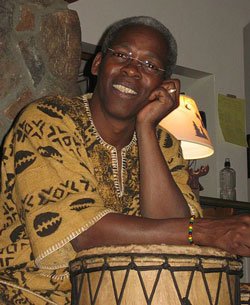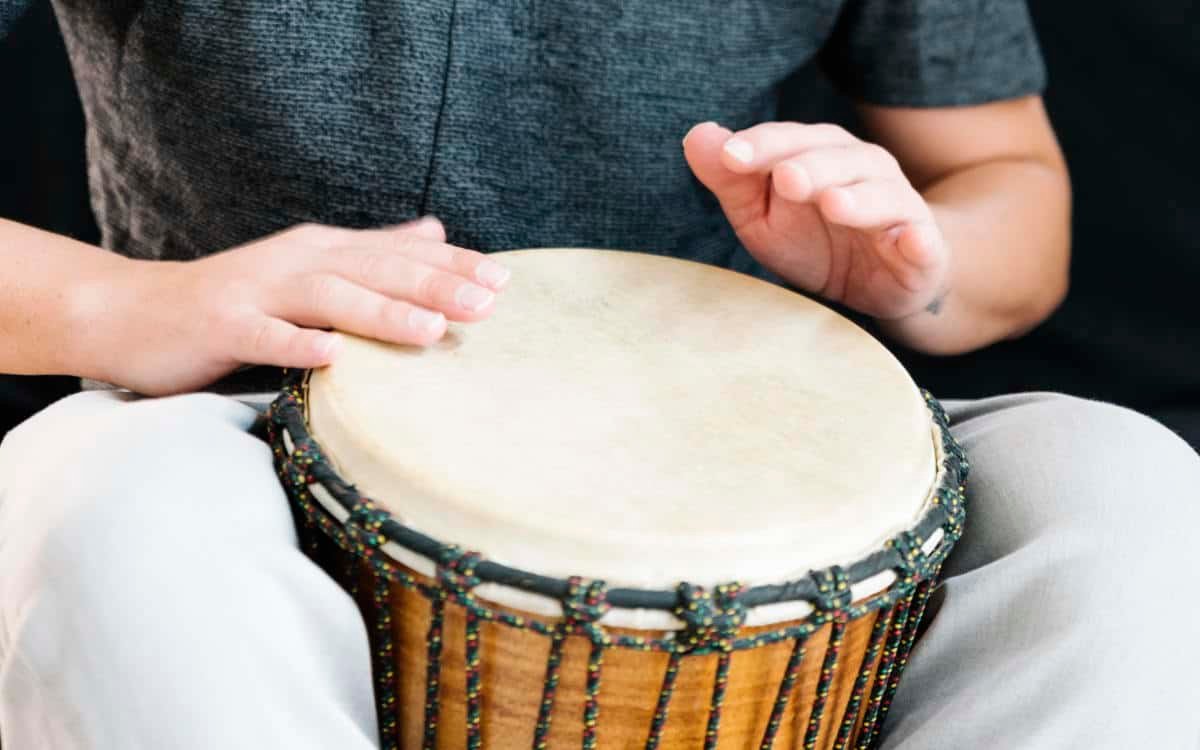
Welcome to Afrodrumming
I'm Al, the djembe guy. I can help you learn to play djembe easily and quickly.
I've been playing, performing and teaching djembe for over 20 years. I've taught complete beginners thousands of times and I know what gets results quickly.
There's nothing like the feeling you get from a rip-roaring session on the djembe. If you want to find out how to tap into that feeling on demand, read on.
I'll turbo-charge your chops and teach you how to get great enjoyment from drumming.
There are loads of free lesons here, so keep going - you're in the right place.
WHAT I BELIEVE:

It should be easy and fun to learn how to play djembe

Rhythm is a skill we all have in abundance

Music is a gift and a universal language anyone can enjoy.
You might think I've had too much African beer. It's a fair shout. Many people find learning the djembe is a huge challenge. Like most things, the difference is in how you approach it.
The most common frustration
I hear it all the time, especially from beginners.
They've played on a djembe for the first time, with a few friends, or they've been to a drum circle.
They had a good time, and are keen to learn more.
They'll usually say something like:
” I love it but it's too fast! ”

Photo: Steven Damron
I feel for them, because they're right.
More experienced players usually lead the pace of drum circles. This is only natural - the rhythms are often meant to be played fast and the better players aren't keen to hang around.
This throws beginners in at the deep end.
This stems from a unique facet of learning the djembe, which is that teaching often happens in a social setting. For newbies, there are 3 problems with learning how to play djembe in a drum circle:
Too fast
As a beginner, you can't develop excellent technique while you're doing your best just to keep up. All you will do is create bad habits.
You can't hear
Most drum circles are loud. Even if they're not, you can struggle to hear yourself over the person next to you. You can't correct yourself when you can't hear what you're doing.
You can't stop
This train keeps a-moving. You can't stop, go back or practice something until you get it right. You can't ask questions, you can't take notes.
I love drum circles - they are essential to your development - but they are not the best or easiest way to learn.
A Different Approach
I found I had much greater success with students when I addressed the 3 major frustrations above. In one-on-one lessons, I could allow students to do three things:
Slow down
It doesn't have to be perfect at first. I slowed things down and removed the social pressure. Already an improvement.
Listen
Students could see exactly what I was doing, they could watch, stop, go back, visualize it, listen again, understand it and then copy it. They had MUCH more success at learning and remembering rhythms.
Repeat
Stop if you need to. Take it as slow as you want. Look and listen carefully to the rhythm. Try again.
Once the basics are in place, you can try a few 'sprints' to push your development.
This is also a better approach for your development as a player. When you play a rhythm at a manageable pace, it allows you to work on technique and accuracy first.
Then speed is just a matter of time.
I was amazed at how few teachers were prepared to do teach like this. Especially since it works so well.
This technique forms the basis of my approach, which conveniently has 3 core principles:
1. Keep it simple
THE GOAL
The basics of percussion are easy to grasp.
This is because our brains already understand rhythm. We experience it every day. In fact, most of our life is rhythmical is some way or other. Nature is full of patterns.
Breathing, walking, talking - our bodies are always in a rhythm, from our very heartbeats, to the blood in our veins, to our brain waves, our muscles, even our eyes blink in a pattern.
You probably think I'm well into my third beer by now. How drunk I am is irrelevant. My point is that you are sub-consciously and physiologically attuned to rhythm. I promise you.
You are already a percussionist, even if you've never played a note.
You just need to let your inner djembe player out.
This is the goal for our drumming - to become the player you already are.
(Ok, I'll put the beer down)
2. Keep it fun
EVEN WHEN YOU'RE PRACTICING HARD
Even though the basics are simple, learning the djembe can take a lifetime. That's what makes it so interesting.
There are a thousand different avenues you could explore and a world of experiences out there.
I will avoid the 'journey vs destination' cliche, because I might throw up.
How about this? A wise African man once said:
Music is a moment. Life is a rhythm, like the sun. There is no time for wasting.
Let's make the most out of both your passion and time.
3. Keep it together
DJEMBE IS ABOUT COMMUNITY
As well as taking lessons, get out there, go to drum circles, practice with friends, go to gigs. I encourage all of these.
- If you need help, reach out.
- If you can help, reach out too.
- If you're not making friends with your drum, you're doing it wrong.
One of the lasting joys of the drum is it's ability to connect people.
Let's Begin
WHAT YOU'LL FIND HERE
This site is divided into 4 areas.
The Beat Goes On...
The djembe - the drum of a thousand voices.
Millions of people all over the world have heard it and been swept away by the infectious beat.
But more than that, the djembe is a builder of bridges. Connections.
From Aus to Alaska, musicians and fans have welcomed the rhythm of the West African drum and the culture of community it represents.
In the spirit of that community, I wish you welcome.
The djembe is on fire in the world and we're here to warm your bones.
I love hearing from you all, so reach out.
Cheers
Al Paton











